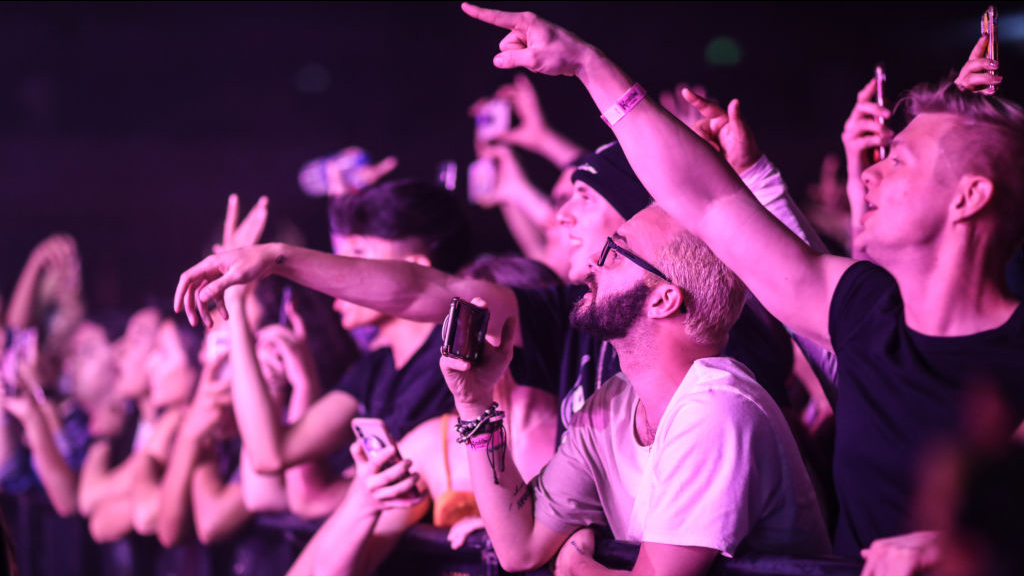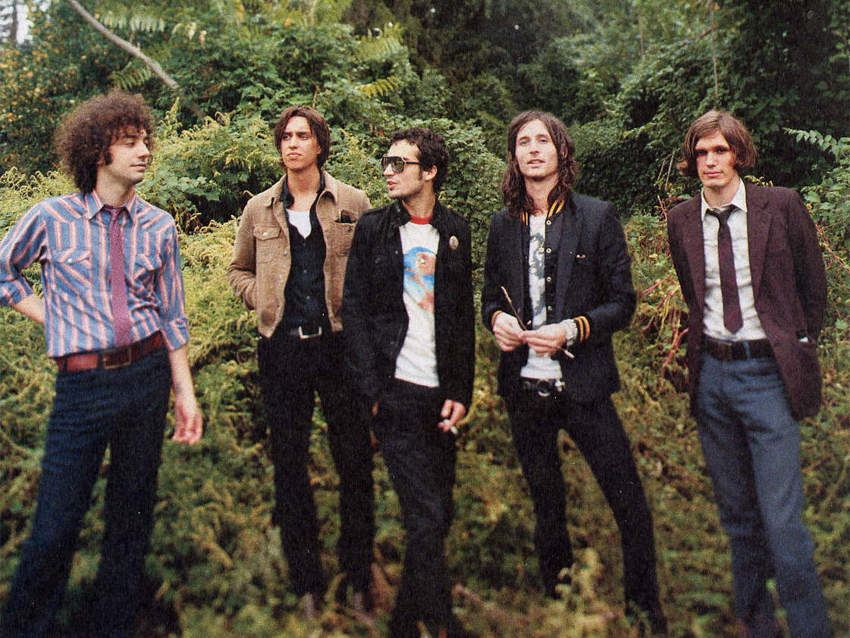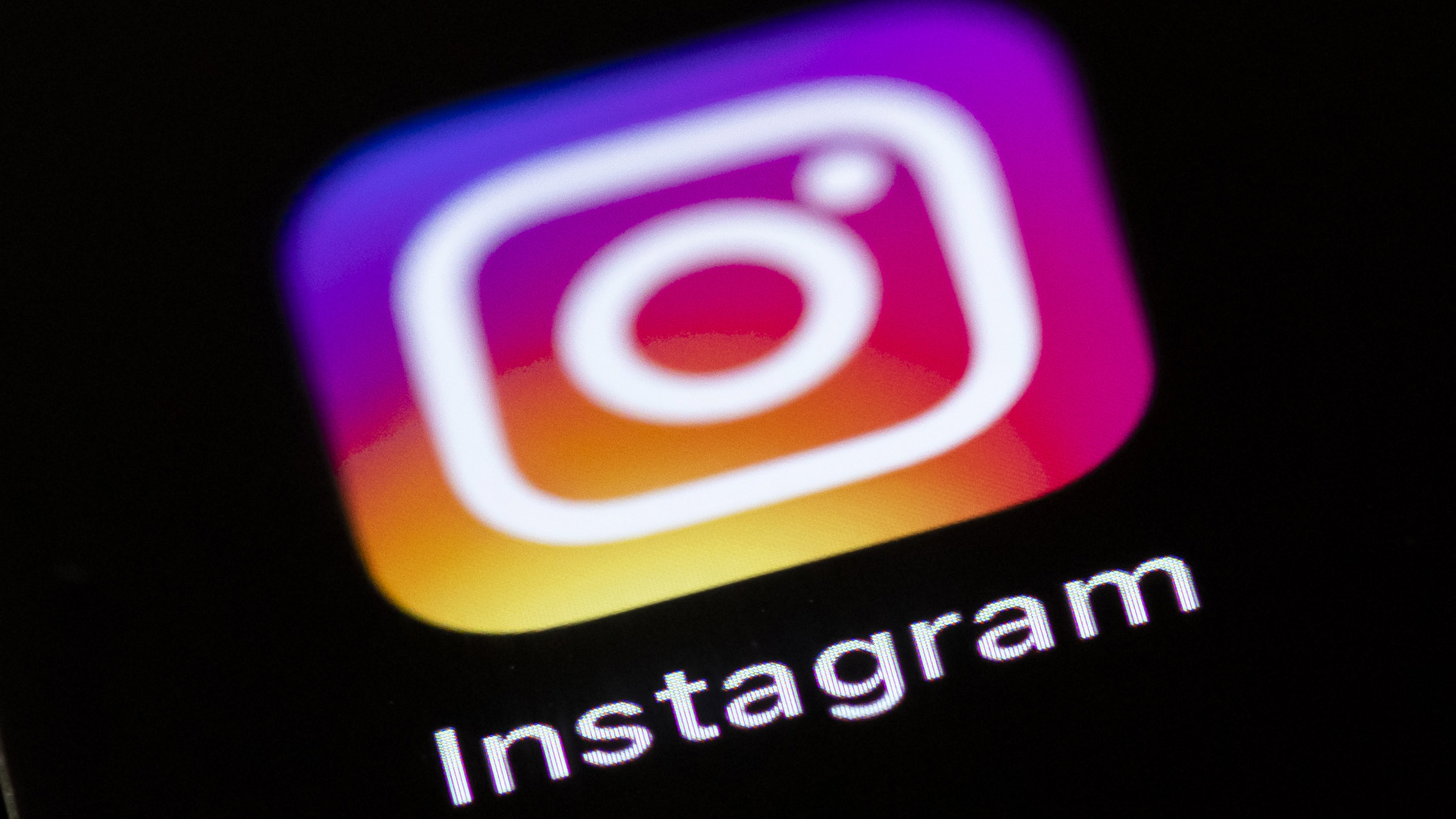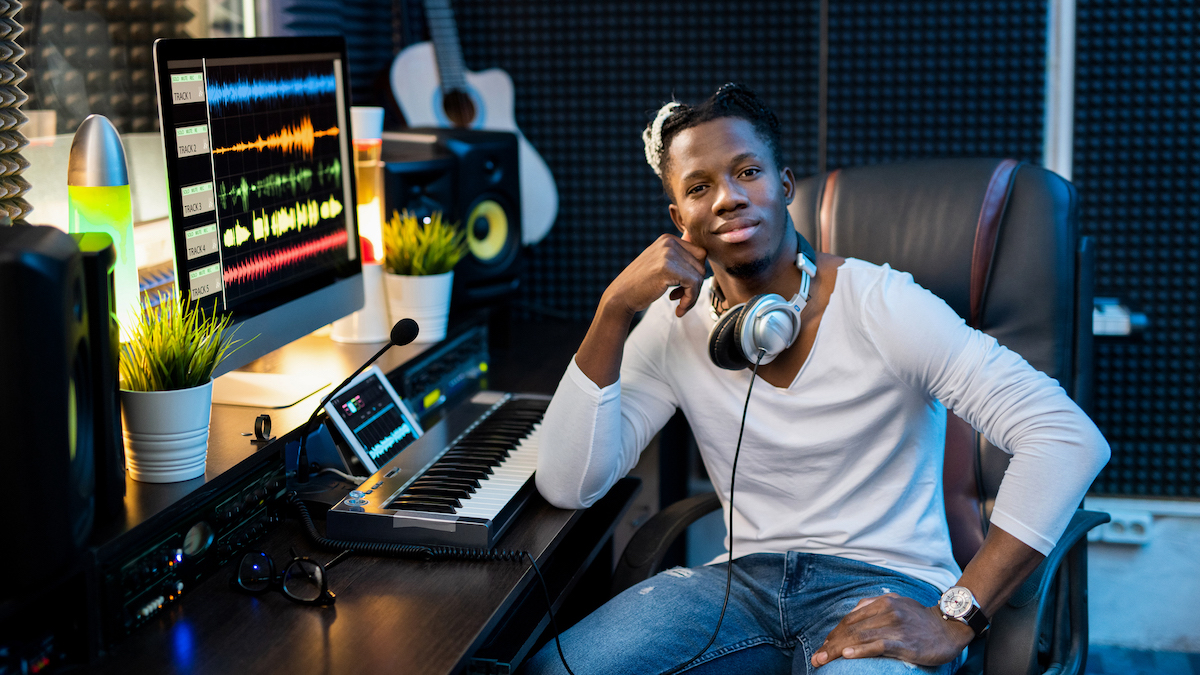
You could spend weeks, months and even years building the most astonishing, potentially era-defining tracks, but, if you then treat the release process as an afterthought, all your hard work is going to end up reaching nobody.
You might be thinking of deferring this side of things to external promotion agencies, but that doesn't mean that you can shirk on having a solid vision of just what your artist identity is.
The truth is, if you release music in an unbranded, visually inconsistent or generally clumsy way, then people can quickly lose interest, even if your music is legitimately awesome.
Worse than that, they might judge your (superb) music quite differently if you’ve plumped for a Times New Roman artist name and a badly cropped stock photo as your album art.
As the boom in self-releasing artists has increased exponentially over the last decade, so too has the growing requirement for musicians to think about how they present themselves.
In days gone by, it was typically a record label, photographer or manager who would delicately consider and construct an artist’s branding and image. Today, it’s more common for musicians to handle the building of this themselves. This is borne out by the sad truth that labels don’t give many a second glance unless they’ve already proved they can cultivate their own following.
But, if you get this stage right, then why would you need a major label anyway? As data reported by Catapult My Music underlined, independent artists now make up more than one third of the overall music business, and accounted for 50% of Spotify revenue in 2023.
Then there's stories like that of Lauren Spencer Smith, a self-releasing artist whose song Fingers Crossed landed in the top five of the UK chart following it going viral on TikTok. The reality is, that it's entirely possible to achieve major success as a self-releasing artist, and retain 100% of your IP.
Why your artist name is critical
The first consideration is whether you’re going to put out your music just as yourself (i.e. your own name) or have a tailored name that suits your music. Historically, artist names have resonated with the context of the time they first came to prominence, or infer something about their sound.
For example, if you think about the name ‘Pink Floyd’, based on the original style of the band, it perfectly sums up both the psychedelic, subversive nature of their music (‘Pink’) and the sense of playful whimsy that the early incarnation of the band evoked (‘Floyd’).
Many bands, particularly those on the heritage indie spectrum, might give themselves a ‘The’ as the definite article at the start of their name (The Strokes, The Black Keys etc), which implies a classicism, or attachment to a sense of proud lineage, stemming back to the early pioneers of rock and pop, who operated in a more formal age.
Others invoke a state of being, or sensation (Nirvana, Oasis etc) whereas others venerate technology, and allude to the technologically-driven music they create, in their name (Aphex Twin, 808 State, Modeselektor).

The point we’re making here is that choosing a band or artist name shouldn't be choosing a random assortment of words. A good name can play a significant role in communicating your intention to the listener before they’ve heard any of your music.
So, think carefully about the music you make, and the type of artist you want people to believe you are. If your name suggests a story, or raises a question, then all the better.
Beyond what the words of your band or artist name state, there’s also the visual impact of how the name looks. This one is critical, and is so often under-valued in importance. Your name will appear on your releases, your website, your socials platforms and your posters.
The biggest brands on Earth know that this is actually a more essential consideration than the words’ meaning. It’s why short, often-meaningless-but-memorable names become more a visual short-hand for a company or service than mean anything in of themselves (key examples include Nike, Apple, Kodak, Google.)
A big part of the above is the actual design of the name and how it appears as a logo. Design wise, it might be tempting to go minimal, yet often using unusual, little-used fonts, or colour-variations can really make your name stand apart from the rest. There's a superb run-down of some of the typography and design of some legendary acts over on indieground.net.
If you’re not great at graphic design, then it's well worth finding someone who can take your idea and craft some interesting spins. After all, this isn’t just a ‘name’ - it’s your business, and is worth taking the time to get right.
Some of the most recognisable band names in history have managed to become a visual short-hand for their respective genres. Just ask Kiss, Nirvana, The Ramones and, the originators of capitalising on band-branding, The Rolling Stones. All of which have spawned branding that has elevated their names into the world of general street fashion, worn by people who might not even be fans of their music.
But, if you’re just getting your feet off the ground as an artist, the core take-home here is not to just plump for the first thing that comes to mind. Test out some mock cover ideas or mock poster/social media advert ideas with different potential artist names, and see how the visual impact lands. If you’ve got close, honest friends to run it by, then definitely do so.
Getting your artist identity out there
After settling on your artist name, the next stage is to launch your artist presence on social media, and begin the process of building your audience. We'd consider this as a more vital step than even getting your streaming distribution locked down.
After all, if you’re planning on releasing music on the big platforms like Spotify, Apple Music or Tidal, you’re going to want an initial bedrock of listeners (even if they’re just friends and family) which you can gradually build upon.
While the platforms you choose might vary depending on your own personal preferences, we massively recommend you set-up an Instagram business account in the first instance.
According to stats amassed by New Artist Model, 35% of all adult social network users are on Instagram, but 72% of teenagers and 71% of 18-24 year-olds have accounts.This younger demographic is an essential one for music listening exposure and engagement.
You can upload videos in the form of reels, as well as art with audio either embedded into the asset or (once you’ve eventually got streaming platform distribution in-hand) directly attached your stories and posts. Take it from us, it's the easiest way to get immediate reaction to your music.

You're going to want to get set-up for tracking your engagement and directly contact your fans, which an Instagram Business account will provide. Instructions on how to set this up can be found here
Your profile image should be - at least initially - a scaled image of your logo within a 320 x 320 frame. This will be cropped into a circle, so your logo should sit centrally, design-wise. Your bio should be fairly brief, and you should reserve some space to include some critical call to actions, such as links to other pages or videos (when you get to making them, that is).
If you have pre-selected pics of yourself that you want to use for your artist identity socials, then use one of these as the cornerstone of your first post, detailing who you are and the kind of music you make.
If you don’t have any press pics, or want to remain somewhat ambiguous, then think of some more creative ways to visually represent, and tease, your music.
Though it might sound like a slog, spending a few hours with an image editor and your music can be quite an enjoyable process, and synthesising the perfect combination of visuals and music can go a long way to instantly grabbing those passive scrollers.
Turn your early followers into fans
We’re going to take the setting up of alternative social accounts, like Facebook or X, as read. Preferences will vary, but in our own experience of establishing a solo artist social media presence, Instagram tends to deliver the best results, and is a far quicker, compelling and often more creatively stimulating ecosystem to maintain.
A big driver to your posts, external links and videos can be through Instagram Stories. Where you can upload short-form videos, links to your posts/pictures or simply a link to your track (when you’ve got them out there). Having a story each day (containing a call-to-action) will, over-time, accumulate more views, streams and awareness of your output.
If you’re basing your launch as an artist around a specific release (in our case, this was an album) then you can begin promoting yourself with a tease campaign: Fragments of your tracks, intercut with creative imagery (which can be pretty subtle), which give the listener a feel of your sound.
Further ideas to bolster your Instagram feed could consist of:
- Posts about specific gear or tech you use. Why and how you use them.
- Posts about the writing of specific tracks and songs - including clips of bits you’re currently working on.
- Track-by-track descriptions of each track on your album/EP, explaining the background and story behind their making.
- Posts about inspirations, and/or experiences with notable other artists.
- Behind-the-scenes clips of recording certain tracks, or generally at work in your studio.
- And, more broadly, ANY nice or potentially engaging images you take can be co-opted into your artist Instagram page.
While these are all solid content generation ideas for your artist feed, you’re likely to be trumpeting this information into something of a howling void at this stage. But, as your tracks start to gain traction, and your videos start to clock higher views, linking back to your Instagram as the primary source of daily content, will keep engaging and reminding your audience that you exist!

Gaining momentum and teasing tracks
While we’ll delve deeper into the more complicated mechanics of distribution across streaming platforms in an upcoming article, we recommend that the first place you should upload your music is an artist-first platform like SoundCloud, Mixcloud, hearthis.at or Audius.
Unlike the major streaming platforms like Spotify and Apple Music, these types of platforms allow immediate account creation and the direct uploading of your tracks. You can then share them with anybody you choose.
You can personalise your account with your own branding and, most importantly, engage with other artists in your niche, and beyond. This is a great environment to get direct feedback from other artists and creators, and is the perfect space for making some initial connections that might become vital down the line.
Once you’ve got your SoundCloud (or alternative listening platform) account established, you can start directing your burgeoning Instagram audience to listen to full tracks by posting direct links to individual tracks in your bio, and in stories.
While it might be tempting to upload everything you’re wanting to get out there in one fell swoop, it can be a sure-fire attention-grabber if you try and tease your upcoming track drops over a period of time. Creating a sense of ongoing momentum that will eventually lead to you releasing your work on streaming platforms.
In the next part of this ongoing series, we’ll explore some further ways you can develop your artist identity, and grow your initial audience into a thriving community of fans!







